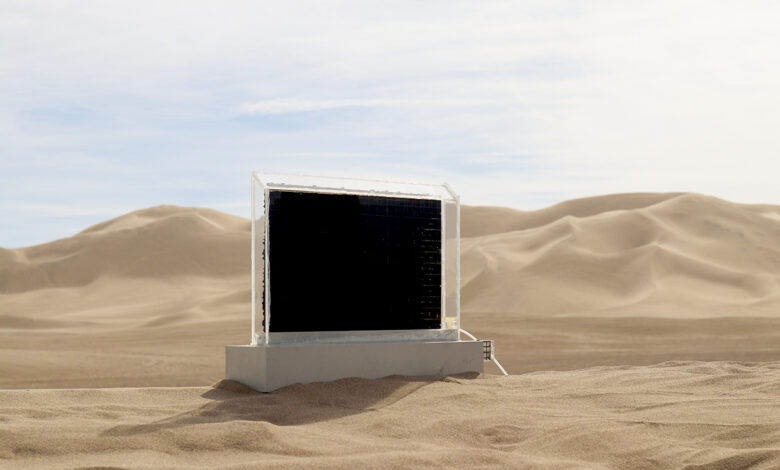A device built at the Massachusetts Institute of Technology harvests water in Death Valley, California, using the Sun’s heat. Photo Credit: Massachusetts Institute of Technology
Technology United StatesThis Device Literally Makes Drinkable Water Out of Thin Air
A revolutionary device is capable of extracting water vapour from the air and converting it into drinkable water, even in remote and arid desert regions.
“Atmospheric water harvesting will eventually be the lowest cost delivered potable water on the planet,” predicts Cody Friesen, an atmospheric water harvesting pioneer at Arizona State University.
An estimated 2.2 billion people worldwide currently lack access to safe drinking water, and billions more still face water insecurity. A team of engineers at the Massachusetts Institute of Technology was able to create a water harvester that extracts vapour from the Earth’s atmosphere, condenses it, and supplies clean drinking water in currently inaccessible places. The system can run entirely on its own, not requiring electricity, batteries, or solar panels. Though more work needs to be done to ensure the device is both scalable and accessible, it seems to be a promising system for a more equitable future. “We imagine that you could one day deploy an array of these panels, and the footprint is very small because they are all vertical, […] collecting water all the time, at household scale,” adds Xuanhe Zhao, the Uncas and Helen Whitaker Professor of Mechanical Engineering and Civil and Environmental Engineering at MIT.





